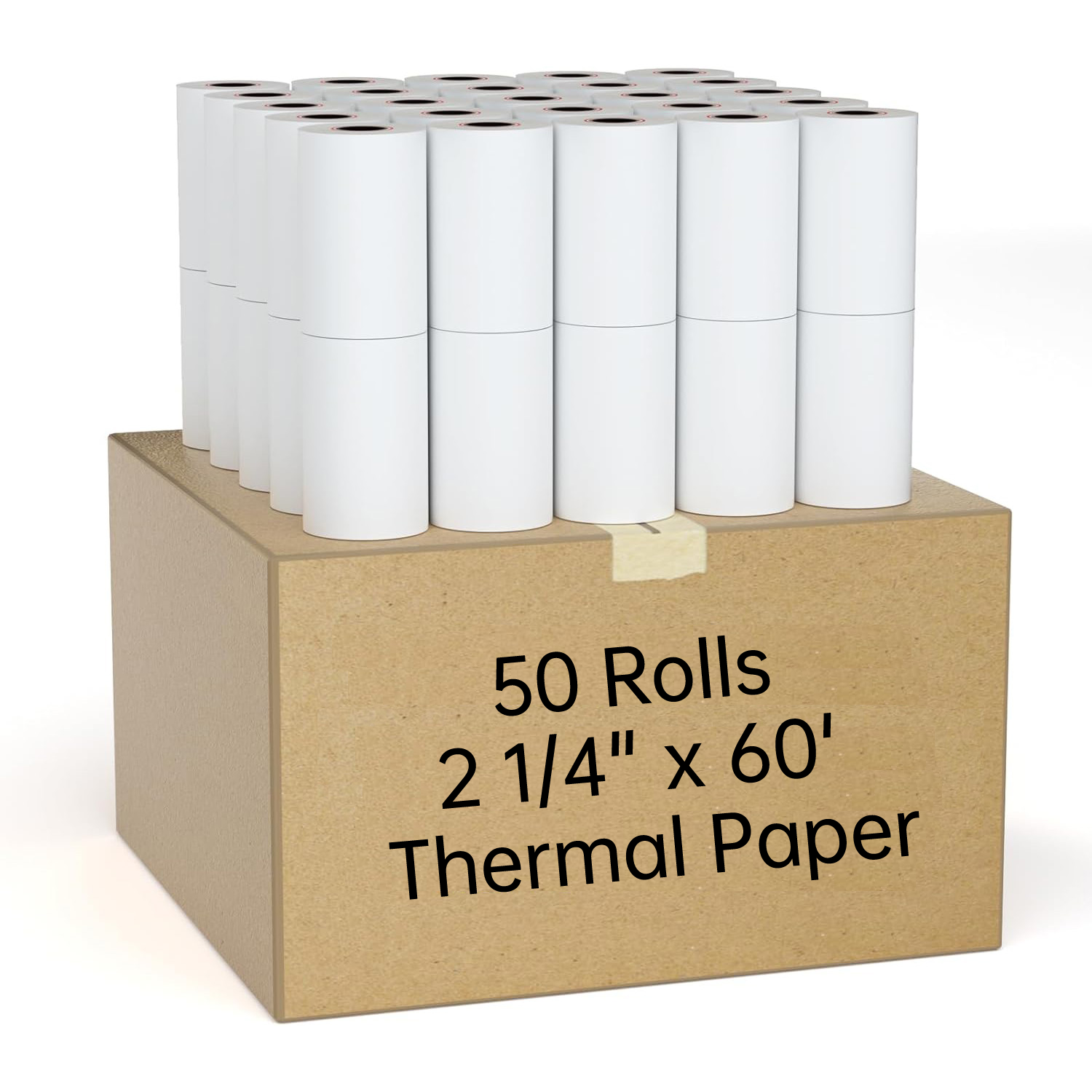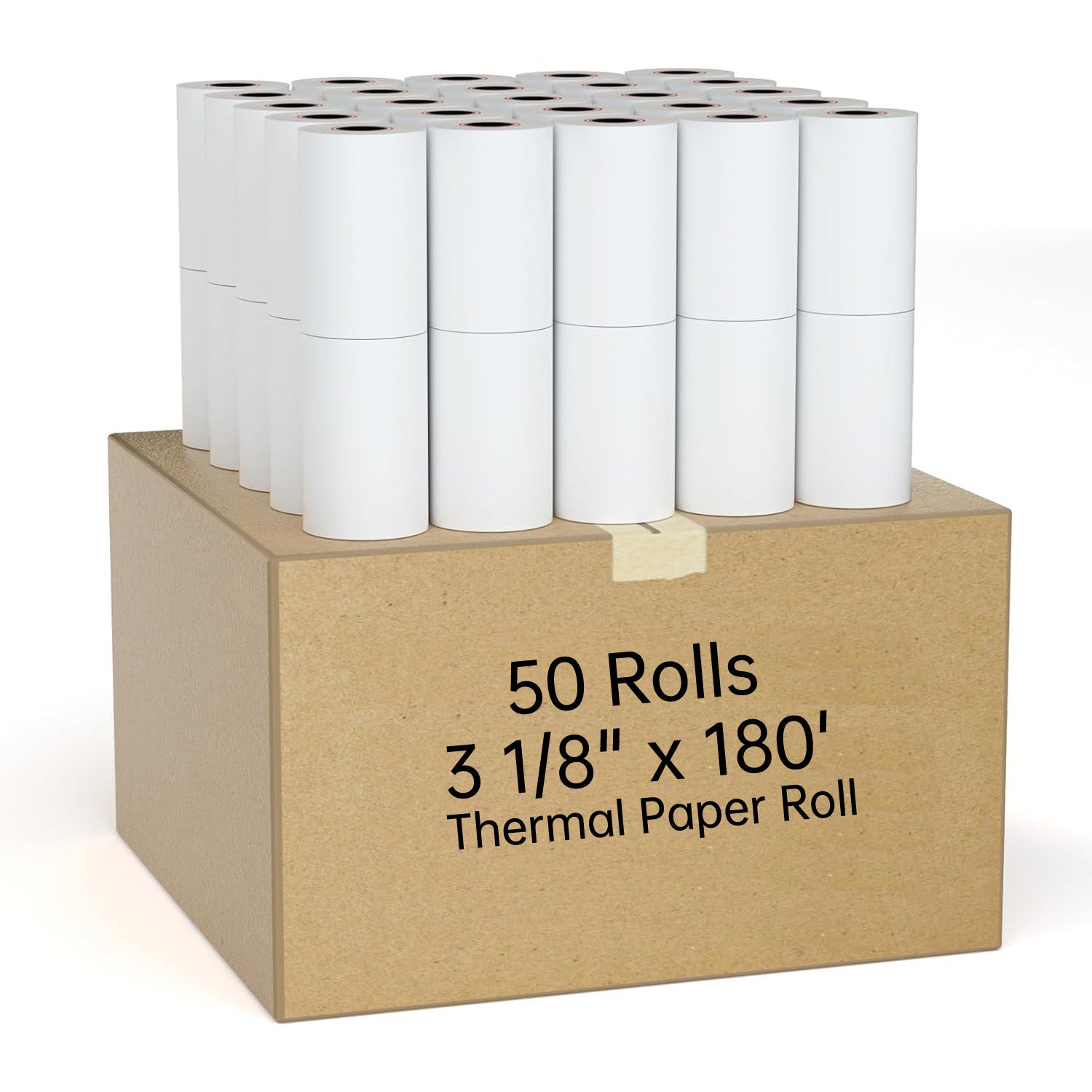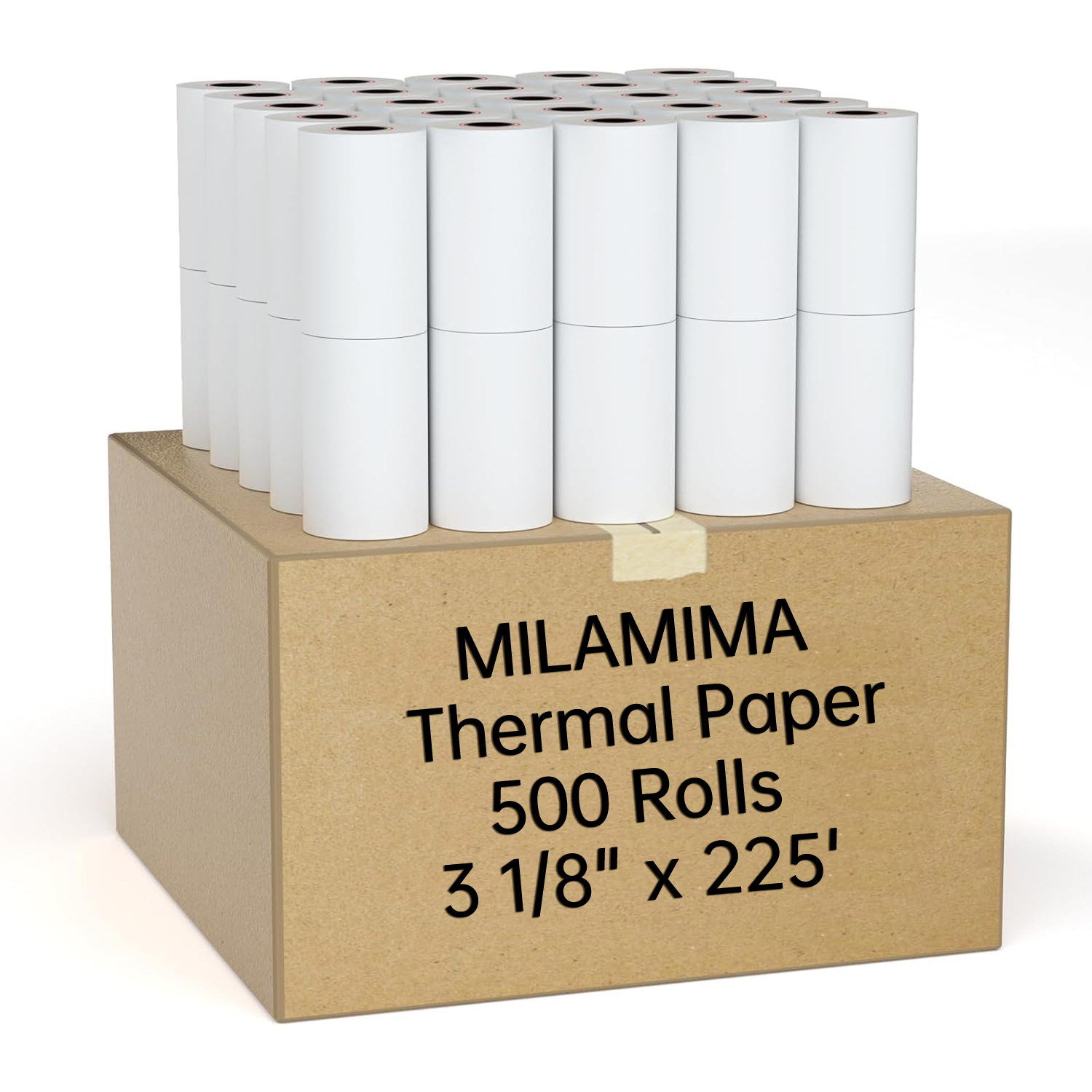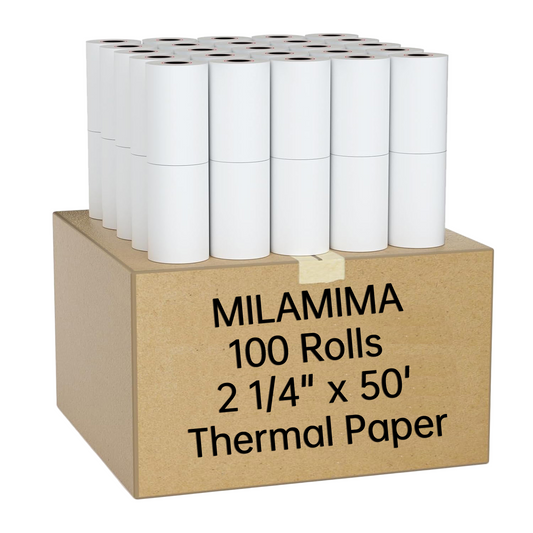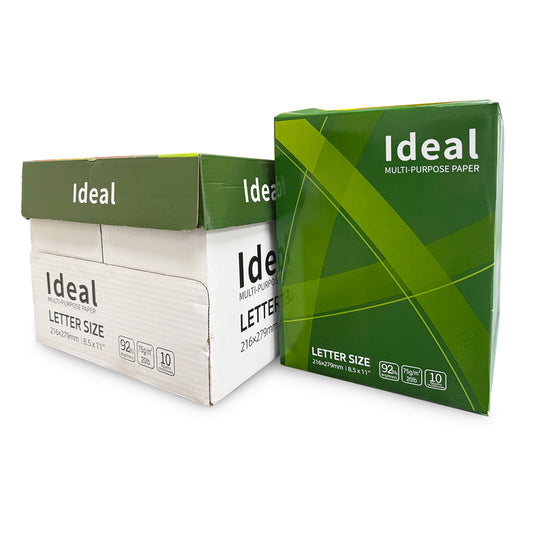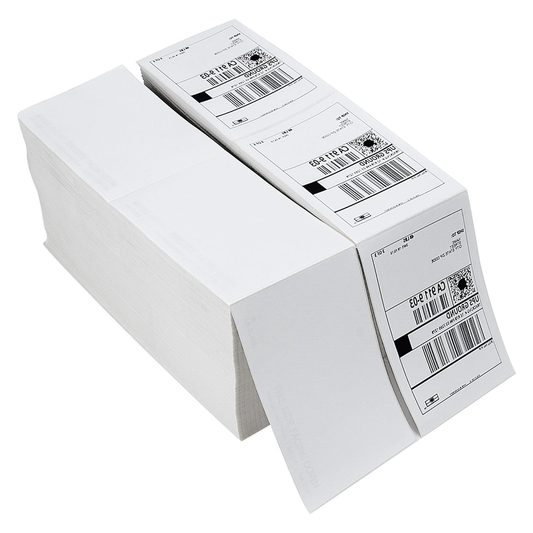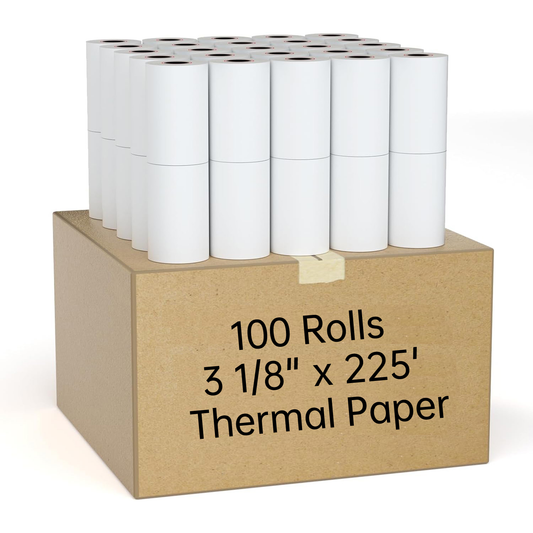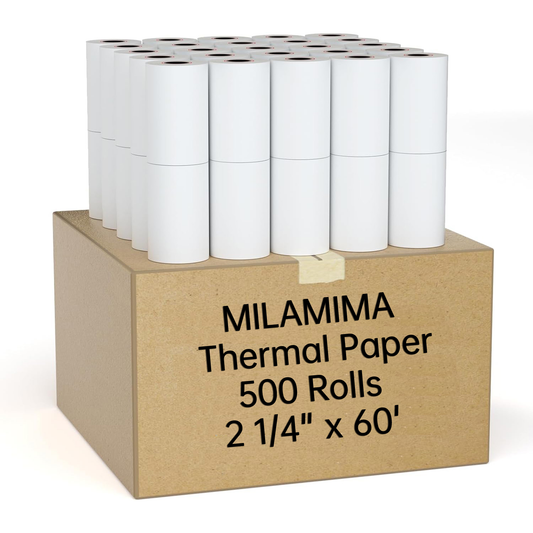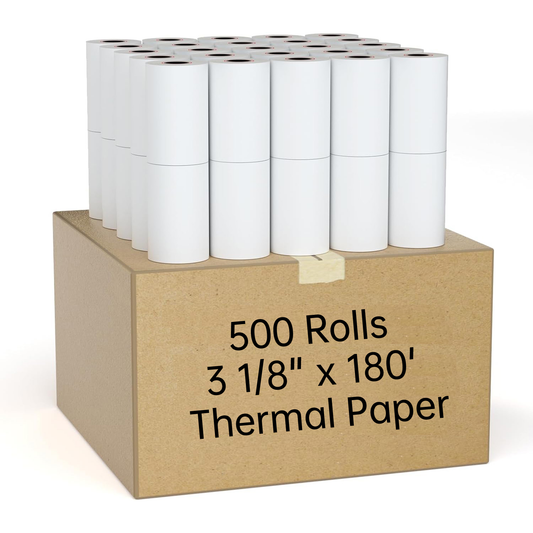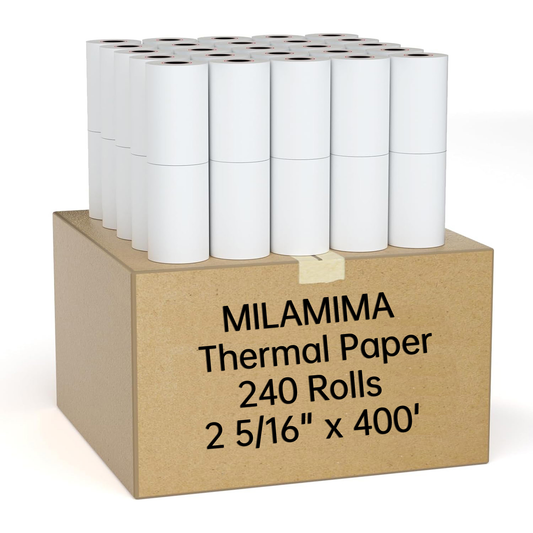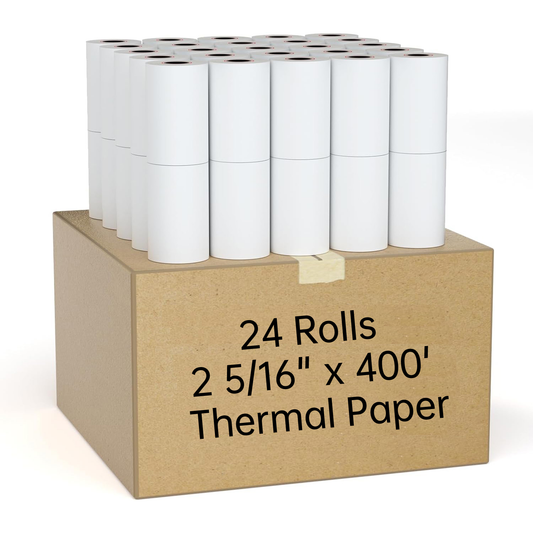Thermal paper is everywhere: receipts, shipping labels, temperature logs and more. But when your rolls live in cold storage (walk-in coolers, freezers, or refrigerated trucks), they can behave differently than at room temperature. This guide explains what happens to thermal paper in cold environments and gives clear, practical steps to keep your prints readable and your rolls intact.
What changes when thermal paper goes cold?
- Reduced sensitivity: Extremely low temperatures can make the thermal coating less responsive, producing faint or incomplete prints until the paper warms up.
- Brittleness: Cold makes the paper stiffer and more brittle, increasing the risk of edge cracking or jams in printers.
- Condensation risk: Moving rolls between cold and warm spaces causes condensation, which can blur or smear prints and damage rolls.
- Adhesive problems (labels): If you're using thermal label stock, adhesives may not bond well at low temperatures unless rated for cold use.
Quick takeaways (if you're in a hurry)
- Store spare rolls sealed with desiccants — moisture is the main enemy.
- Acclimate rolls to room temperature before printing for best results.
- Use thermal paper or thermal labels rated for cold temperatures when printing inside the cold environment.
Step-by-step: Best practices for using thermal paper in cold storage
1. Choose the right paper
When possible, buy thermal paper or thermal labels specified for chilled or frozen environments. Manufacturers will often list operating and storage temperature ranges on the spec sheet — look for wording like "suitable for refrigeration/frozen storage" or an explicit temperature range.
2. Store rolls correctly
- Keep unopened rolls in airtight packaging with desiccant packs to reduce moisture exposure.
- Store rolls horizontally or upright on shelving — avoid compressing edges against cold metal surfaces.
- Avoid direct contact with freezer walls or damp floors; use shelving or insulated containers.
3. Handle condensation carefully
Condensation occurs when cold rolls enter a warm environment. To minimize damage:
- Move rolls in sealed bags between temperature zones — open the bag only after the roll has warmed slightly.
- Allow rolls to acclimate before printing. For most rolls, 15–60 minutes is often sufficient depending on the temperature difference; longer if rolls were in very low temperatures.
4. Printing tips inside cold environments
- If printing inside a cold room, use a thermal printer rated to operate at that temperature (check the printer's operating range).
- Adjust print darkness (thermal energy) in your printer settings if prints come out faint; increase heat/dwell time gradually rather than maxing out immediately.
- For label applications, use cold-weather adhesives or specialty low-temperature label stock to ensure sticking power.
5. Test and document
Before rolling out a large deployment, run a quick in-house test:
- Take one roll straight from cold storage and print a test receipt/label.
- Record how legible the print is immediately and after 24–48 hours.
- Adjust printer settings or change paper type based on the results.
Storage & acclimation checklist (copyable)
- Store rolls sealed with desiccant — check packaging for moisture exposure.
- Keep extra stock at ambient temperature when possible (recommended storage: typical room temp).
- Move rolls in sealed bags when transporting between cold and warm zones.
- Label cold-rated stock clearly in inventory.
- Test one roll from each manufacturer before full adoption.
When to consider alternatives
If your operation requires immediate, reliable printing inside very cold environments (e.g., long-term freezer labeling), consider:
- Thermal transfer labels: These use a ribbon and are more durable in extreme cold and moist conditions.
- Cold-rated direct thermal stock: Specialty direct thermal papers formulated to perform at low temps.
- Pre-printed or pre-printed + barcode tags: Print critical info in a controlled room and attach before freezing.
Common problems & quick fixes
- Faint or missing print
- Let the paper and printer warm up to a closer temperature match; increase print darkness slowly. If persistent, switch to cold-rated paper.
- Smudged prints after moving to warm area
- Moisture likely caused smudging. Use sealed transport bags and desiccants; allow acclimation before opening.
- Labels not sticking
- Use cold-temperature adhesives or thermal transfer labels designed for refrigeration/freezing.
- Paper edge cracking or jams
- Paper has become brittle. Warm rolls gradually before loading and avoid forcing brittle rolls through tight path printers.
Quick FAQ
Q: Can I print immediately after taking a roll out of the freezer?
A: Printing straight from a very cold roll often produces faint prints and increases the chance of paper cracking. It's best to let the roll acclimate, or use paper rated for low temps.
Q: How long should rolls acclimate?
A: That depends on the temperature gap. For small differences, 15–30 minutes may be enough. For deep-freeze to room transitions, allow longer (up to a few hours) or store spare rolls at ambient temperature for immediate use.
Q: Will thermal prints fade faster if stored in cold conditions?
A: Thermal prints are mainly affected by heat, light, and chemical exposure. Cold itself doesn’t cause prints to fade quickly, but moisture from condensation can cause smearing and damage. Proper storage avoids this.
Recommended product considerations
When shopping, check spec sheets for operating and storage temperature ranges, cold-weather adhesive specs (for labels), and any mention of moisture or freezer resistance. If you want help selecting options, our store carries both standard and cold-rated rolls — see thermal paper options.
Final notes
Cold storage presents predictable challenges for thermal paper: condensation, brittleness, and reduced sensitivity. With the right paper, correct storage, and a few simple handling rules (sealed transport, acclimation, and testing), you can keep prints crisp and operations smooth.


